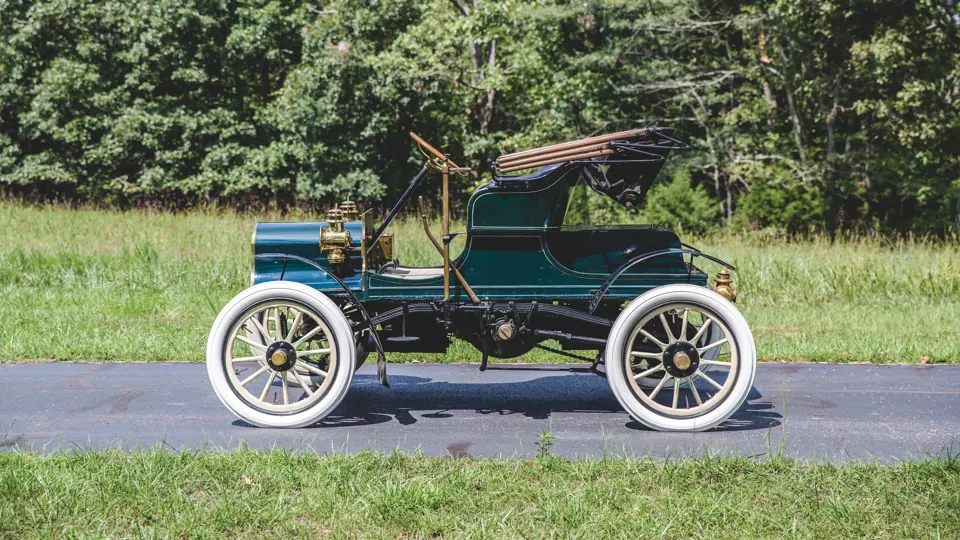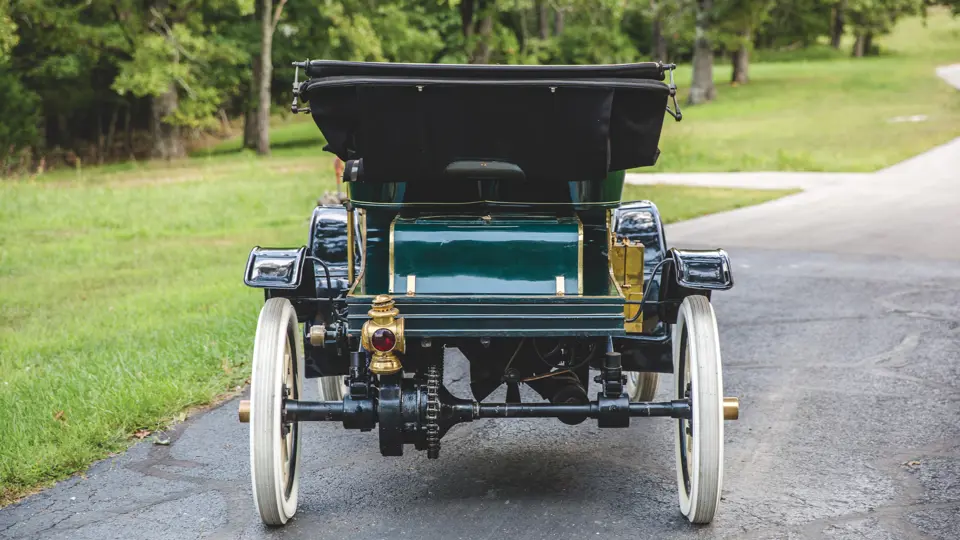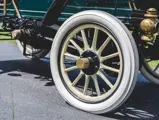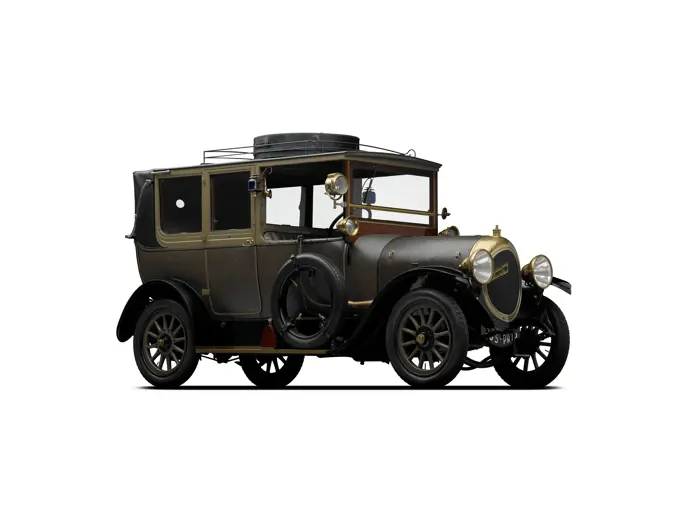Harry Knox was a neighbor of automotive pioneer J. Frank Duryea in Springfield, Massachusetts. A graduate of the Springfield Technical Institute, Knox went to work for the Overman Wheel Company in nearby Chicopee Falls, where he built three experimental cars. Then, with the encouragement of Duryea, he returned to Springfield to form the Knox Automobile Company.
Knox’s first vehicle design was a three-wheel runabout, of which 53 were built in 1900. Four-wheel cars followed in 1902, all with Knox’s hallmark “porcupine” engine, an air-cooled design that used spike-like pins on the cylinders instead of cooling fins. It was billed as “The Car that Never Drinks.” The engine was located low in the chassis, with a transverse crankshaft and cylinders extending fore and aft. Early models had a sloping front dashboard, but by 1905 this gave way to a dummy hood that was becoming fashionable in the industry regardless of whether there was an engine beneath it.
Harry Knox left the company in 1904 to build the Atlas car across town, but the Knox company expanded to build five models, with one to four cylinders, by 1906. That year a Knox completed the prestigious Glidden Tour without losing a single point.
Fully restored, this 1906 Knox F-4 is ideally suited for one- and two-cylinder tours. The drivetrain has been rebuilt, with electric starting added for convenience, although the side-mounted crank remains operational. It retains chain drive and has a side-mounted carbide generator for the gas lighting. It has the correct style wheels and tires. The period-correct brass presents nicely. The green body exhibits a good shine, and the black patent leather fenders are intact.
Previously owned by the great collectors John Moir and Manny Souza, this is a fine example of the “Procupine Knox.”
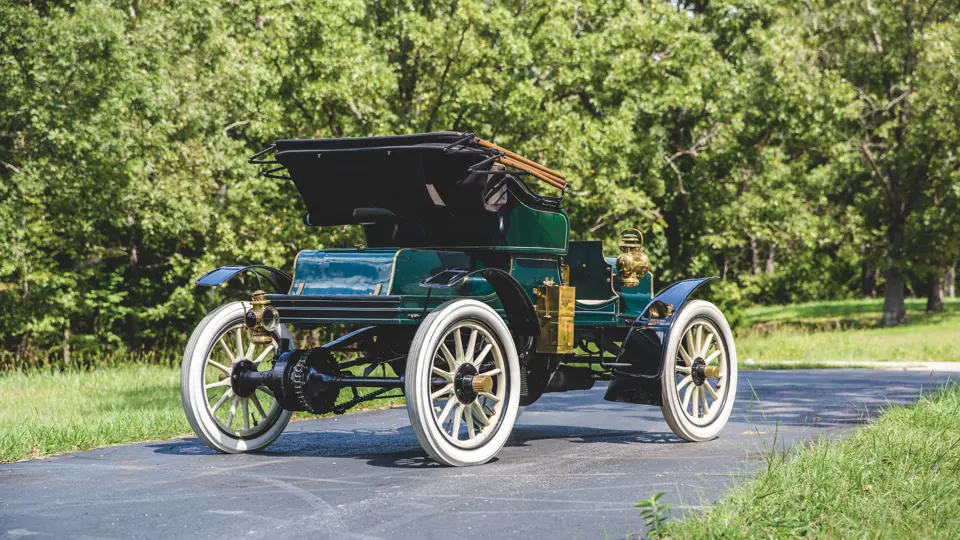

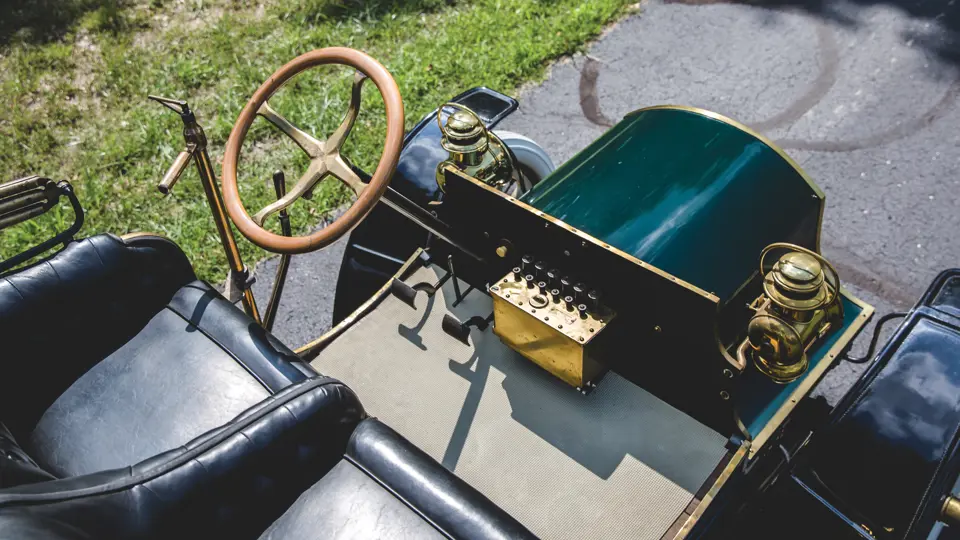

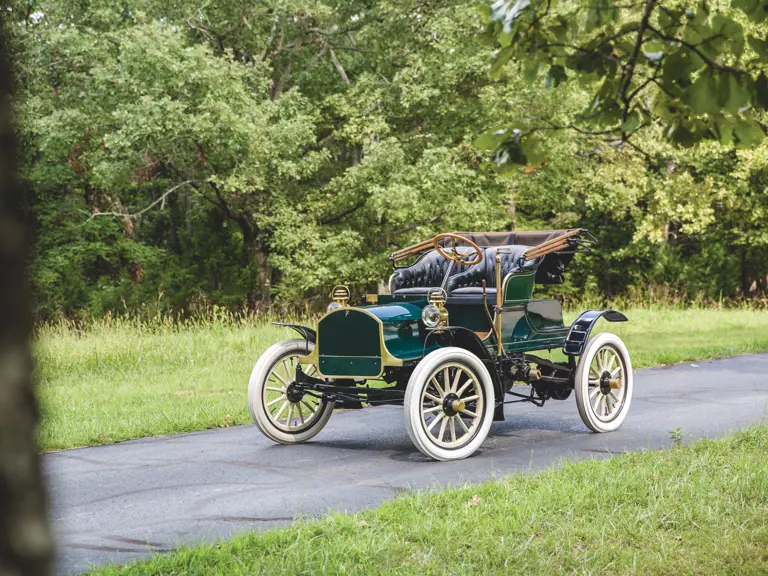
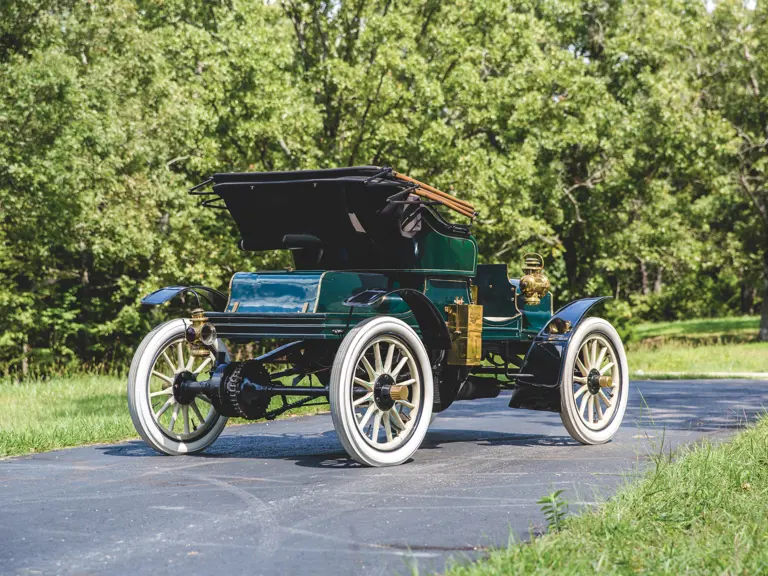


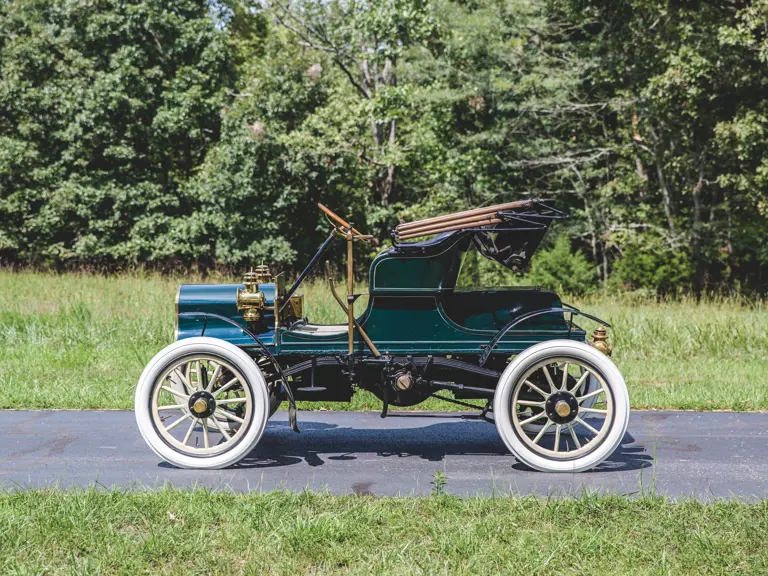
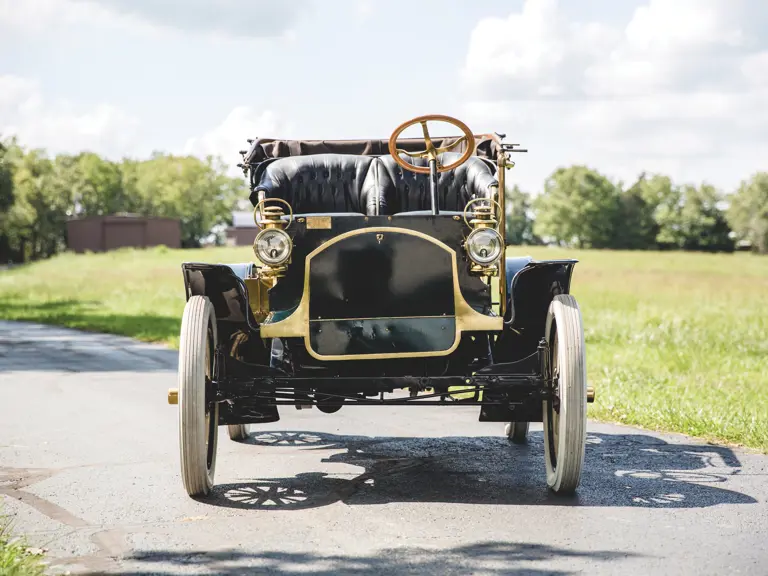
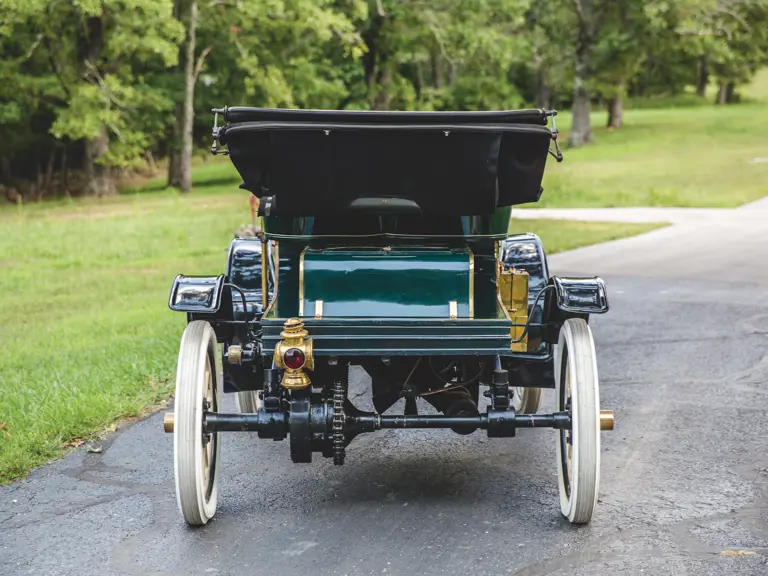
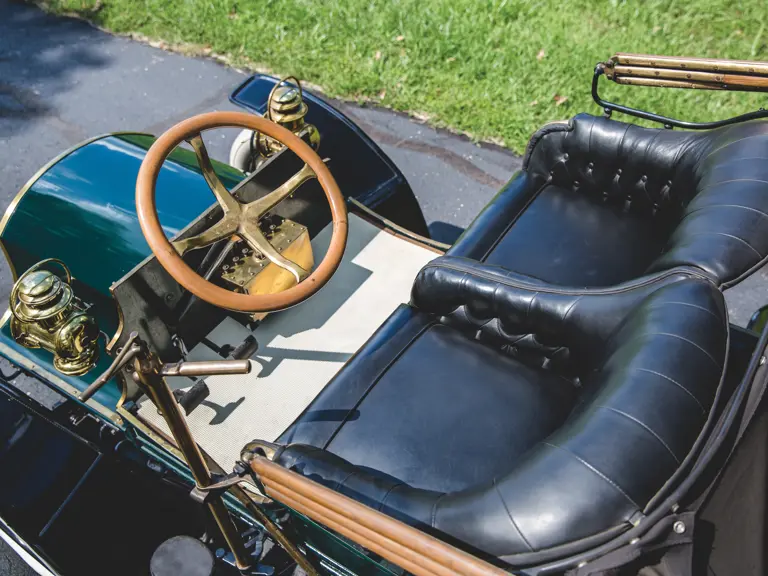
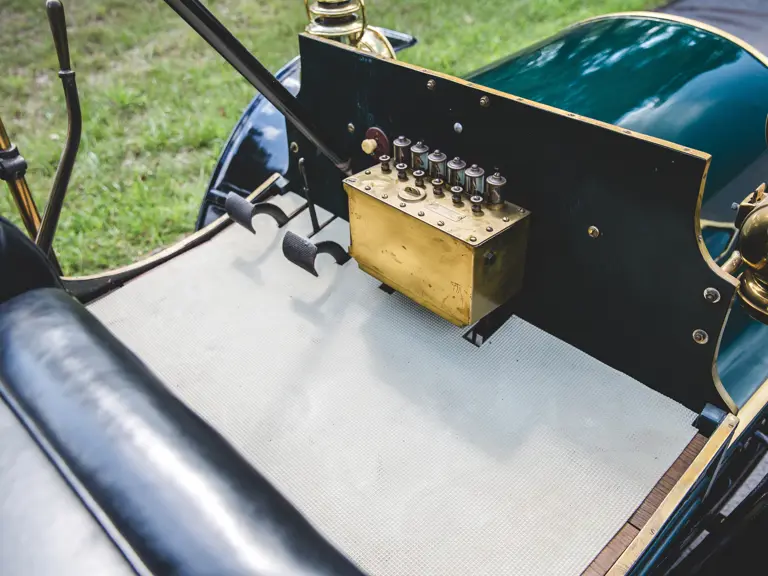
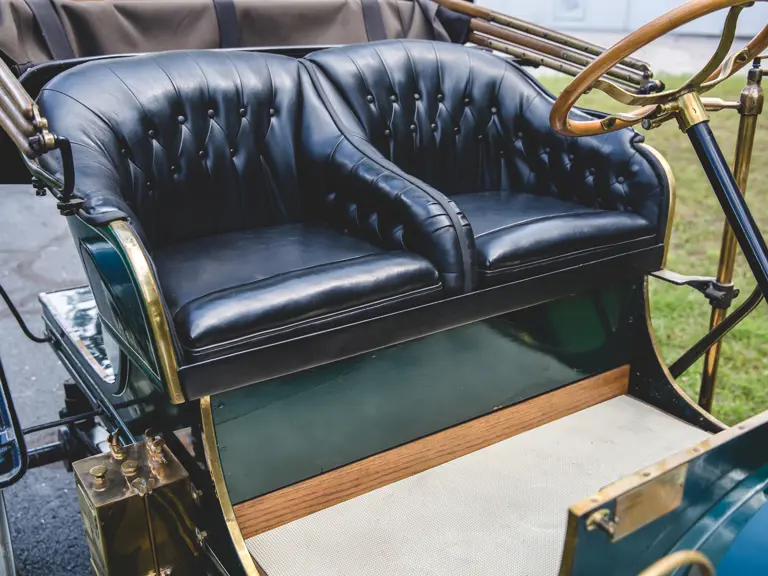
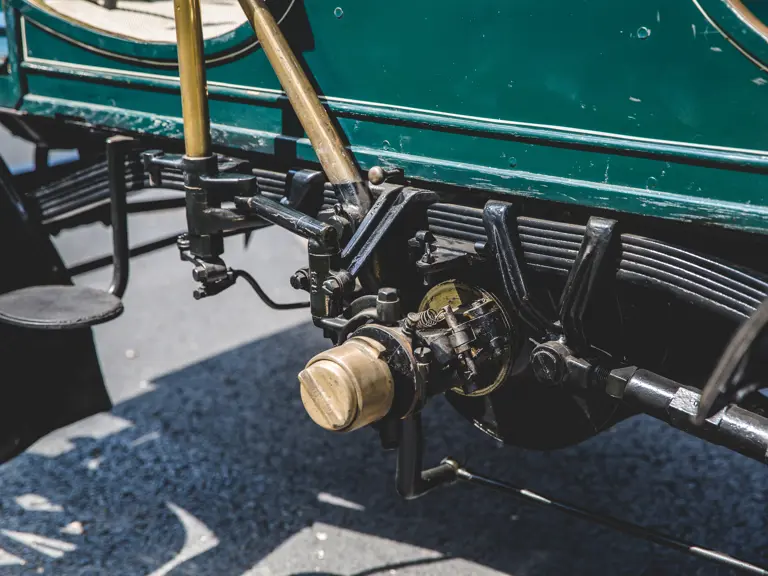
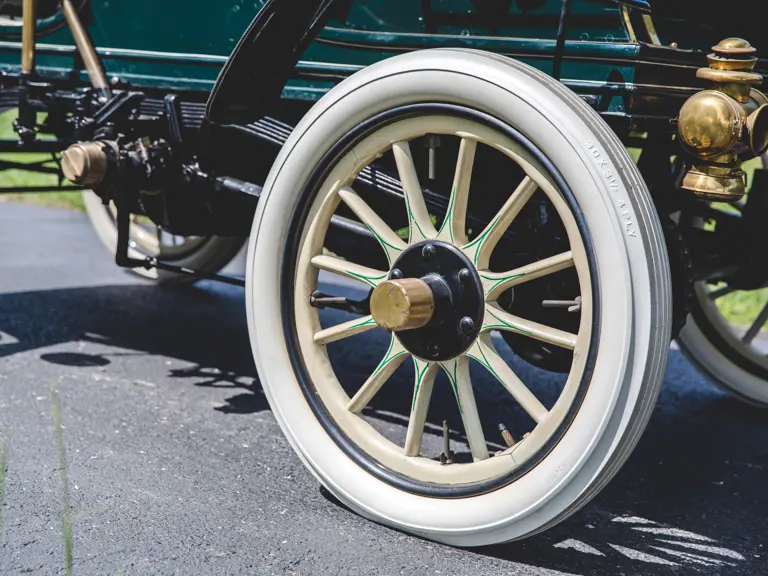
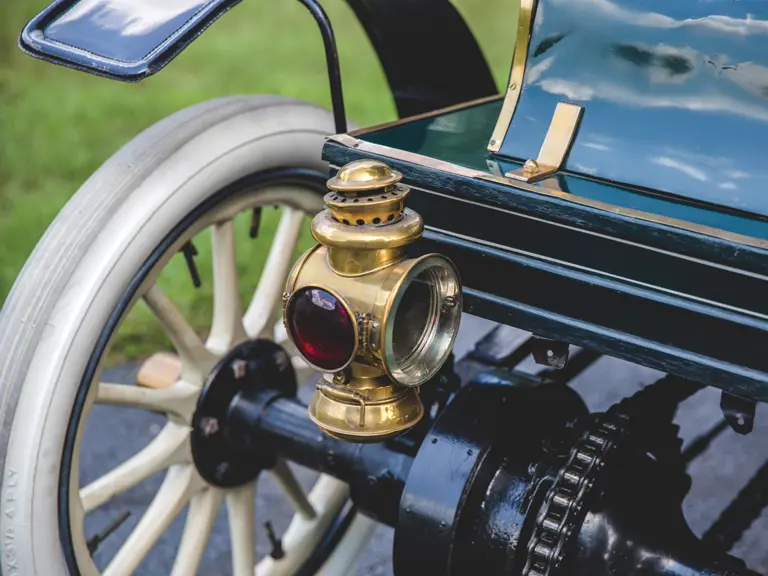
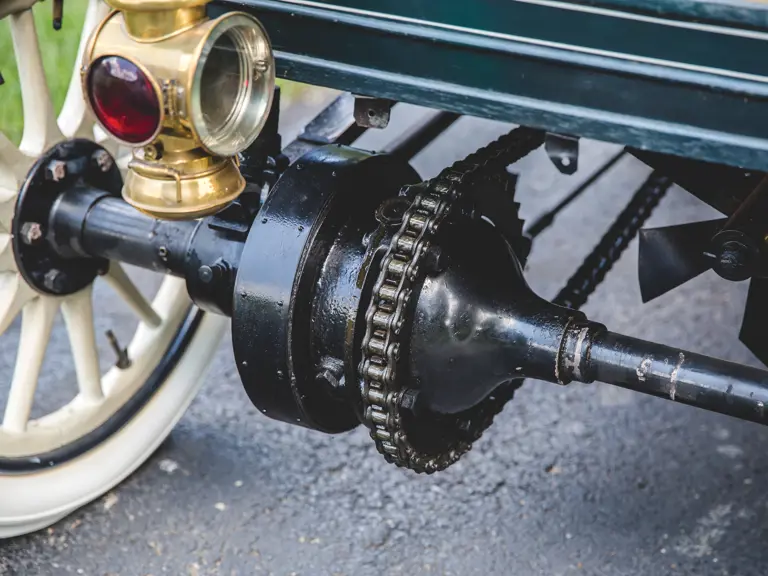
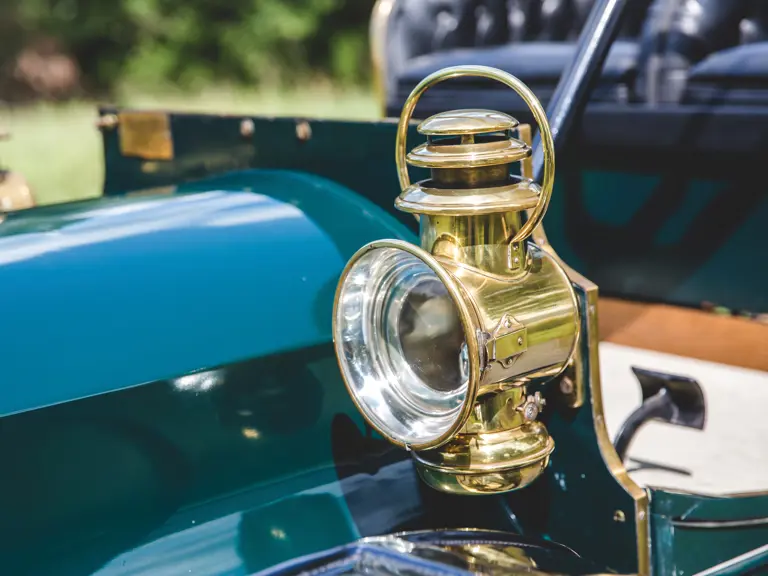

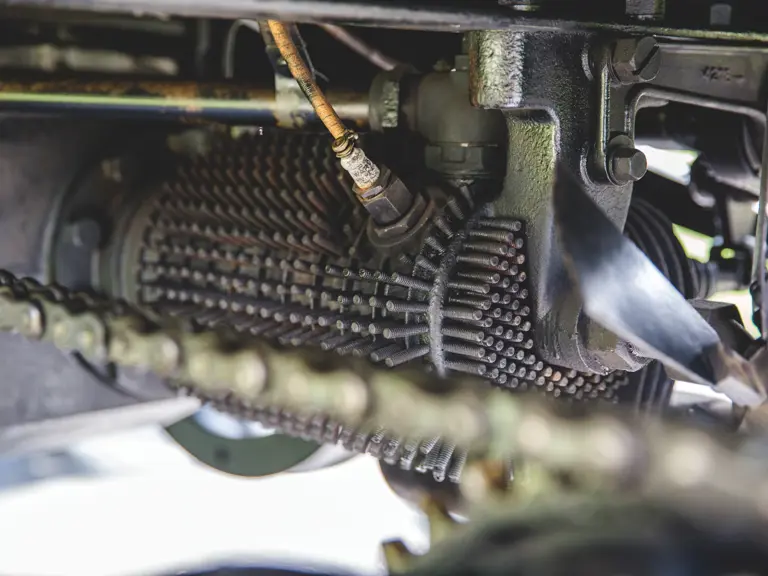
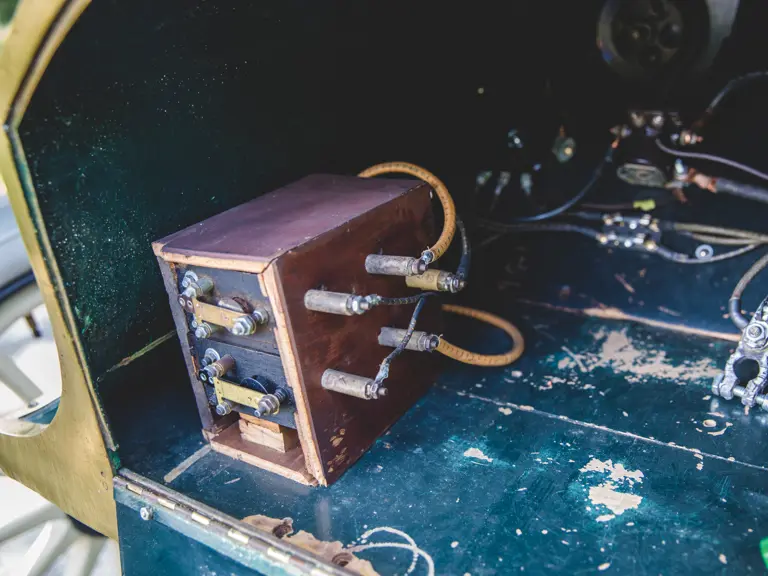
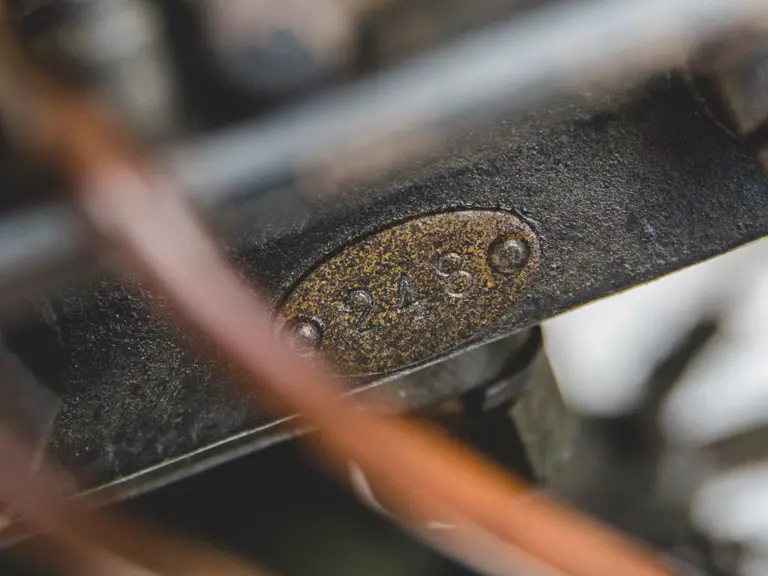

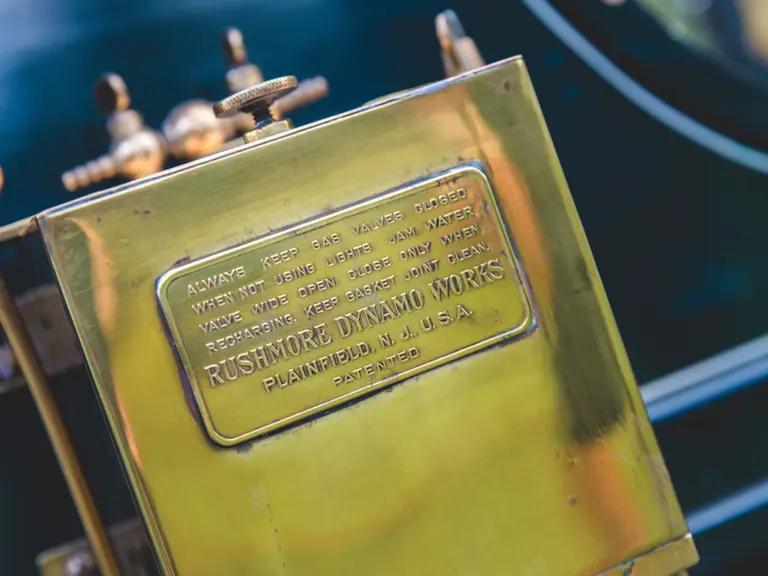
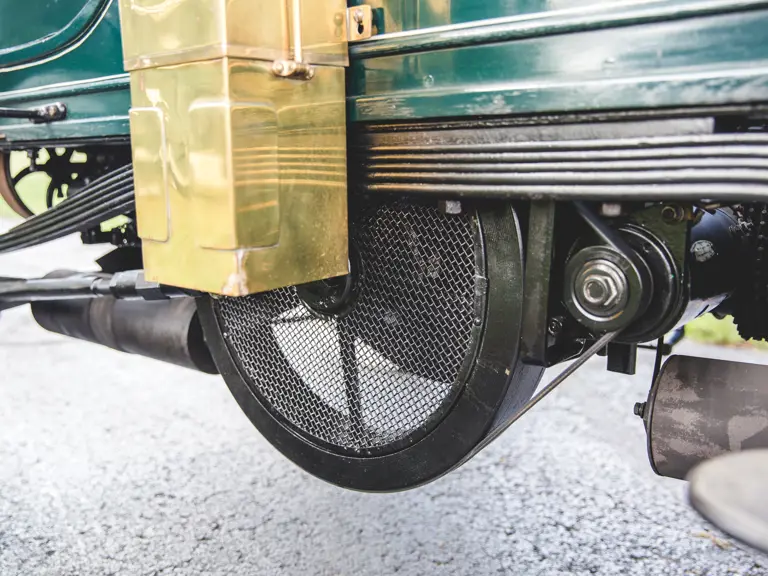
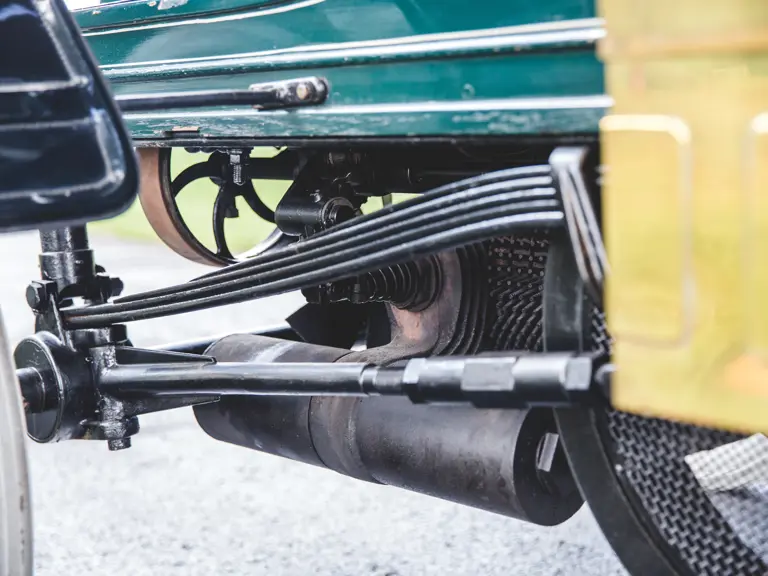
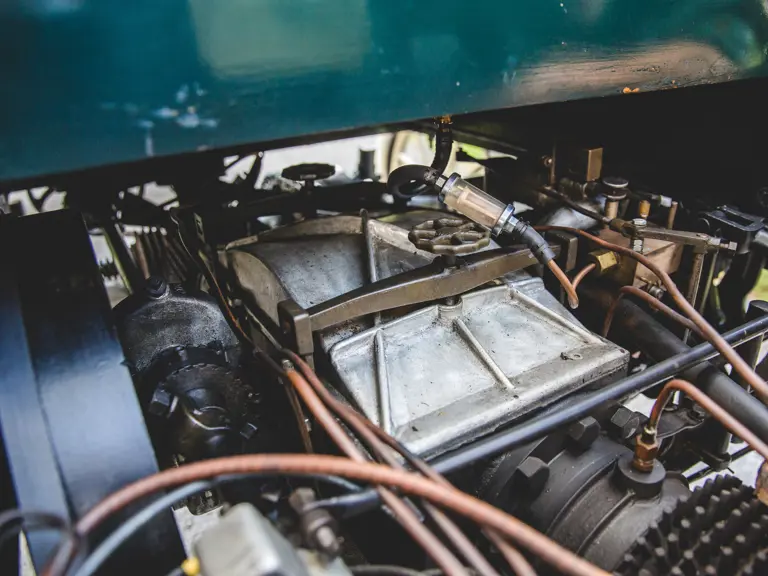
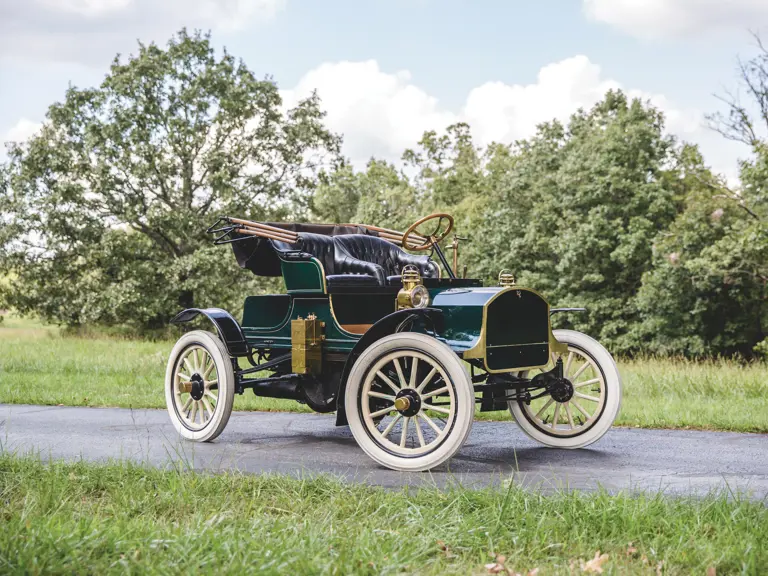
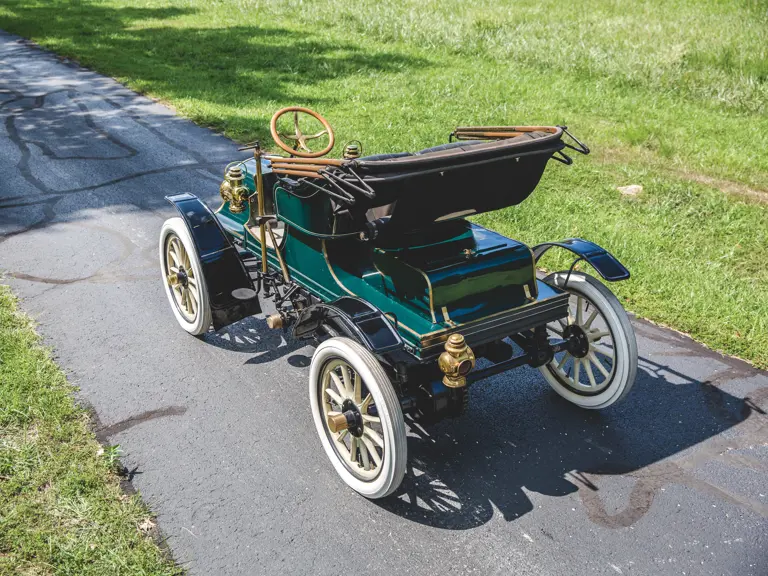
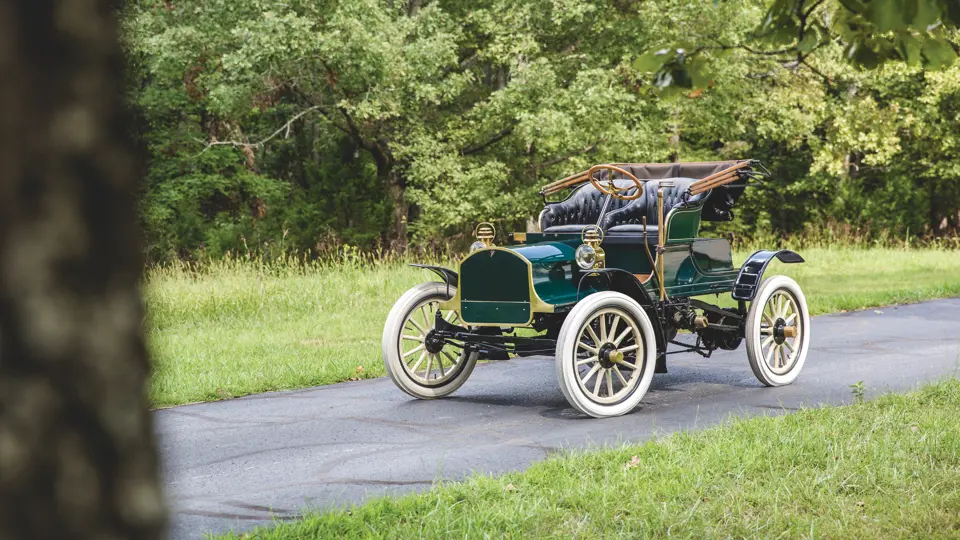
 | Hershey, Pennsylvania
| Hershey, Pennsylvania
